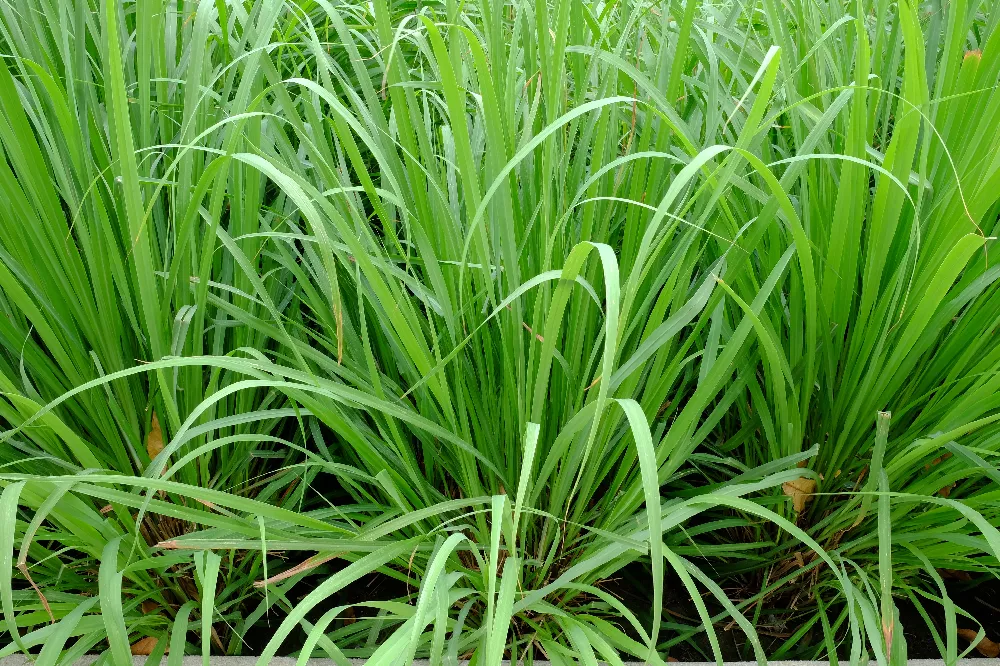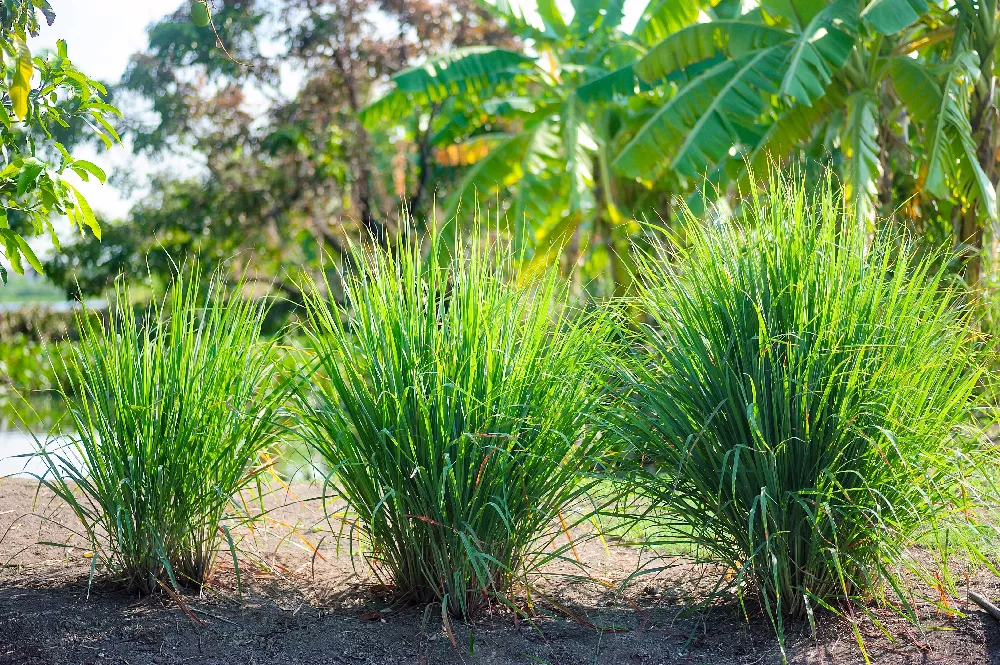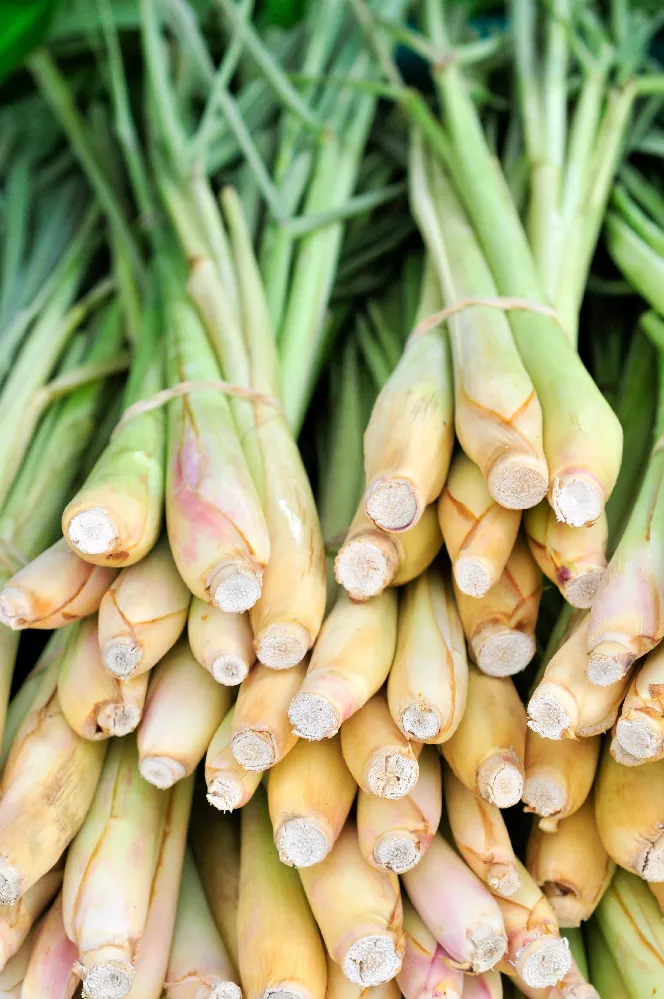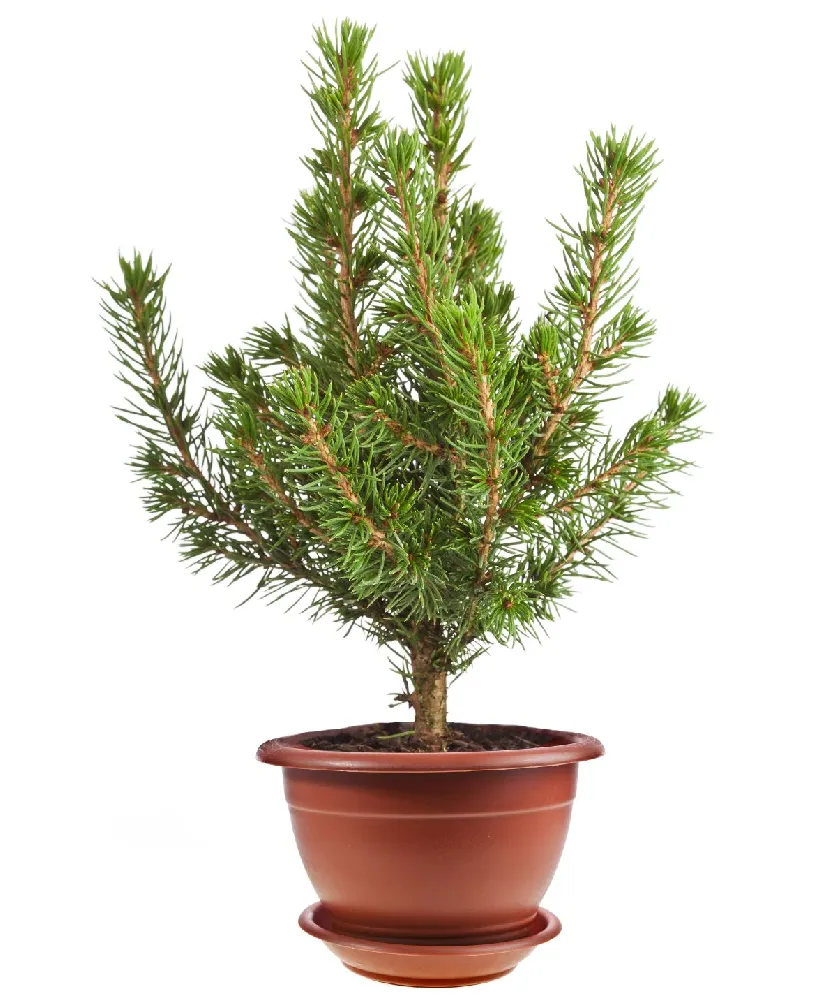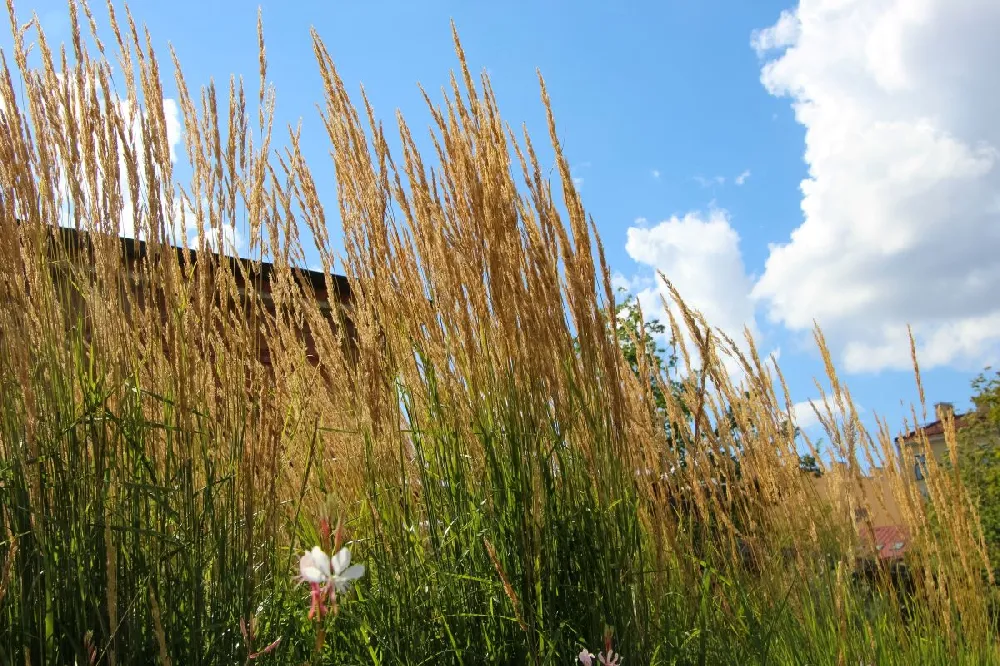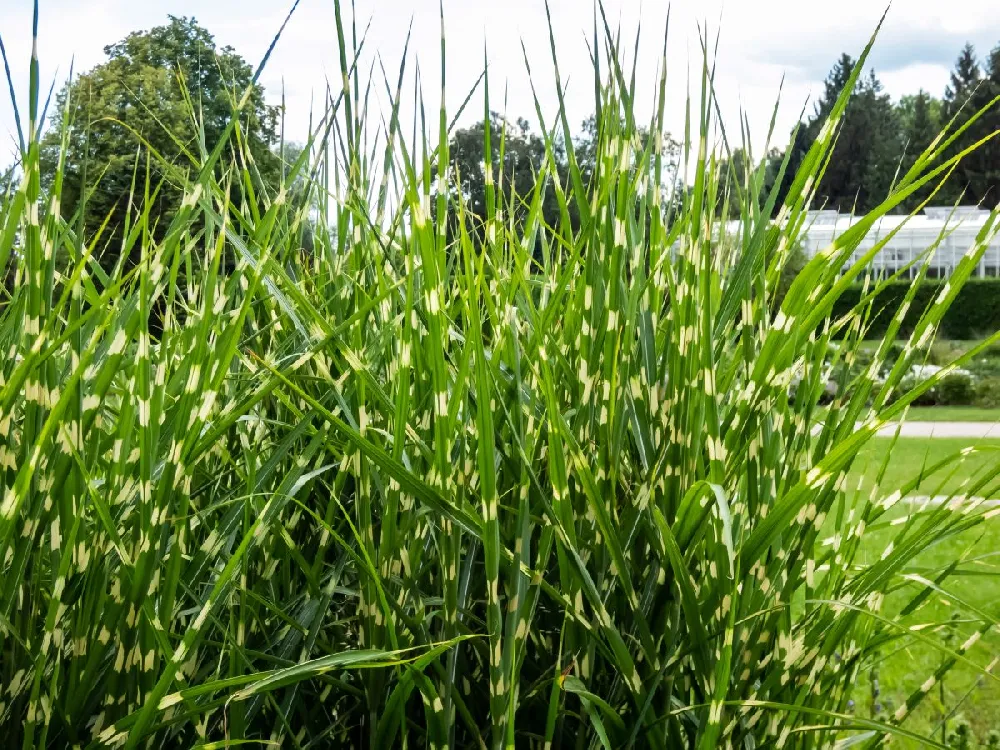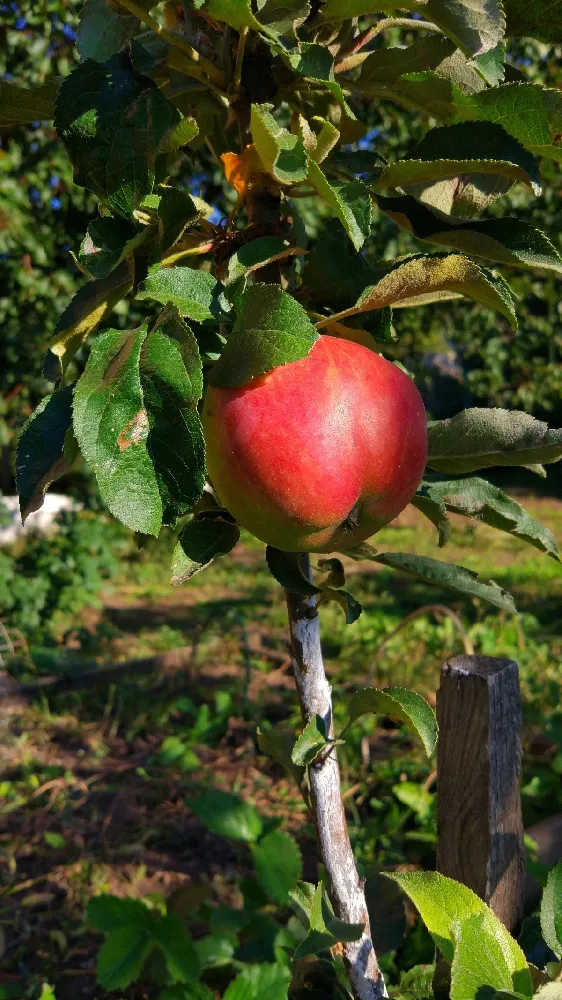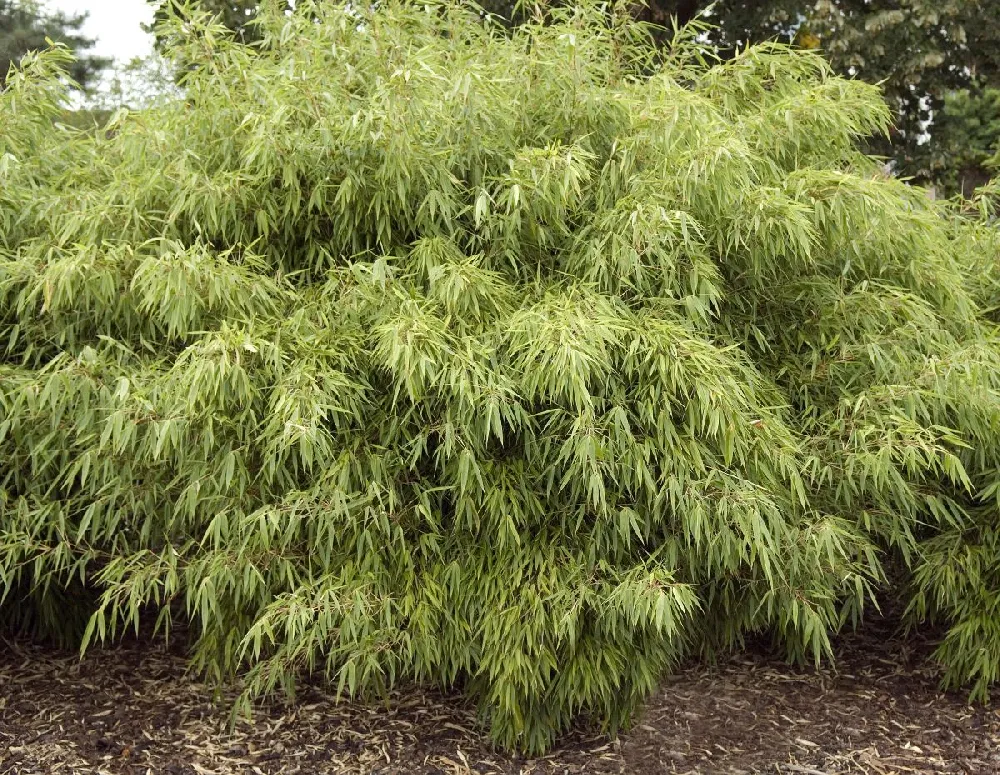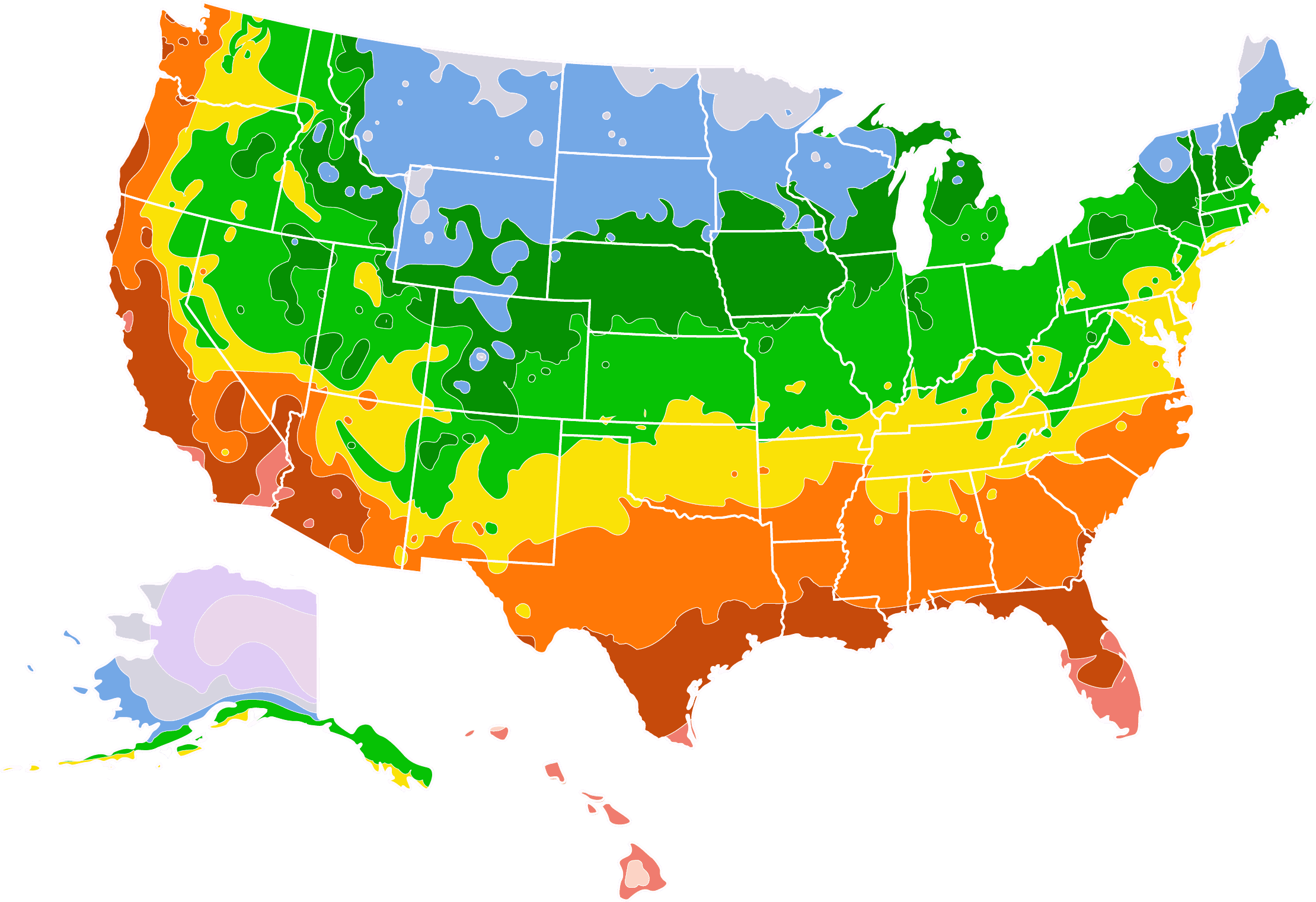- Home >
- Shrubs and Bushes >
- Ornamental Grasses >
- Lemongrass
Lemongrass for Sale - Buying & Growing Guide
- Ships in 1-2 days
- 1-Year Warranty Eligible
- Pots or accessories are not included unless specified in the product options.
Shipping Details:
Once your order is shipped, you’ll receive an email with a tracking number and estimated delivery date. Most orders ship immediately, but some items are seasonal and may only ship in spring or fall. These products are noted on the website.
A native of Southeast Asia, West Indian lemon grass, or Cymbopogon citratus, is a versatile plant with multiple benefits. Best known as an ingredient in Vietnamese and Thai cuisine, this sun-loving plant also makes a decorative addition to gardens. Lemon grass will grow outdoors year-round in USDA hardiness zones 9 and above, or can be overwintered indoors in colder climates. Here are some other facts about lemongrass:
- Lemon grass tea can help relieve digestive issues, like upset stomachs.
- Essential oils made from lemon grass can provide pain relief for common ailments.
- If you don’t have a garden, you can raise lemon grass in containers.
Plant Care
Sunlight

Thrives with six or more hours of direct sunlight each day. Will grow in partial shade too.
Watering
Keep soil moist but not wet. Consider watering once every three to five days.
Fertilizing

Requires nitrogen-rich fertilizer. Weekly fertilizer applications work well in summer.
Planting and Care
Planting instructions
If you’re planting lemon grass in a garden, choose a spot that receives full sun. Make sure the soil is fertile and well-draining. You can also mix in fertilizer or aged compost to improve the quality of the soil. Plant lemon grass during the spring, after all chances of frost have passed. If you are planting multiple lemon grass plants, space them about 2 feet apart. If you’re planting lemon grass in a pot, use well-draining potting soil and a pot that is large and wide enough to ensure it won’t tip over, since lemon grass can grow quite tall.
Watering and nutrients
Lemon grass prefers to be kept in moist, but not waterlogged, soil. If your lemon grass is in a garden, it should be watered every few days, or whenever the top inch of soil becomes dry. Lemon grass grown in containers typically needs to be watered more frequently, most likely every one to two days in the spring and summer. During the winter, when the plant is dormant, you can water it less frequently. During the spring and summer, you can fertilize lemon grass with a water-soluble plant food every few weeks.
Pruning
Given the right growing conditions, lemon grass will grow fairly quickly. If you are frequently using lemon grass for cooking, this might be sufficient to keep your plant from becoming overgrown. Otherwise, you may have to trim the plant to keep it healthy. The best time to prune lemon grass is in the early spring, before the growing season starts. You can prune away any brown or dead-looking stalks at the root with clean, sharp shears, or by tugging them gently if they have already become detached.
Propagation
If you’re interested in propagating lemon grass, you’re in luck—doing so is simple. A piece of lemon grass (with the basal plant intact) can be rooted easily in a glass of water.
Pests, diseases, and animals
Lemon grass is susceptible to a fungus known as lemon grass rust, which occurs when conditions become excessively damp and moist. Telltale signs of rust include brown, yellow, and red streaks on the plant’s leaves. You can address the issue by pruning away damaged leaves, and ensuring there is enough space between plants to allow for adequate airflow. As far as pests go, aphids are attracted to the sap in lemon grass leaves. If you have an aphid infestation, you can get rid of the pests by washing the plant with neem oil or insecticidal soap.
Harvesting
Once lemon grass stalks reach a height of 12 inches, and are about half an inch at the base, the plant is ready for harvest. If you have an outdoor plant, harvest lemon grass towards the end of the growing season, before the first frost.
Indoor plants can be harvested year-round. Harvested lemon grass resembles green onions, with a small, white bulb at the bottom. You can pull up a stalk by hand, or cut the stalk at ground level. Either way, you want the bottom portion of the stalk, which is the edible part of the plant.
Temperature
Lemon grass, in its native habitat, enjoys long and hot growing seasons and will grow best in areas that can replicate these conditions. If you live in a mild climate year round, then you can plant your lemon grass directly in soil in your garden and enjoy the perennial all year long. To survive outside throughout winter, temperatures will need to remain above 40 degrees Fahrenheit, with little fluctuation in temperature.
If you do not live in a mild climate where this is possible, then lemon grass should be kept in containers and brought inside when temperatures get too low. Otherwise, lemon grass plants will die over winter, though with the right care, they will be able to start fresh growth when spring rolls around again.
If you keep your lemon grass plant inside, regular home temperatures will be fine for the plant. If you are comfortable in your home, then your plant will be too. As the plant does not like to get too cold, make sure you don’t keep it near drafty areas, such as entryways, cooling vents, or open windows. Also, be sure to keep it in a well-used part of your home that will be heated throughout winter. If you place the plant in a rarely used guest room or storage room that doesn’t get heated often, then you may inadvertently allow the plant to die from too low temperatures.
Light
This plant is one of few that enjoy full, direct sun, so it’s perfect to set in a bright sunny window or an unshaded area of your garden if you want to keep it outside. Lemon grass will need plenty of bright sunlight even in winter, so ensure it has access to natural light; otherwise, the stalks will turn brown. If situated in an ideal bright spot, you will see rapid growth during summer months from your lemon grass. If your plant lives in an area with bright but indirect light, it should still grow well, but not as quickly. Lemon grass does not like to be kept in low light or shaded areas and will suffer if it is kept in these conditions.
Humidity
In their natural environment, lemon grass plants experience quite humid conditions. They will benefit from living in high humidity in your home or garden, though as long as light, temperature, and water conditions are right, humidity shouldn’t be too much of a concern and regular humidity found in homes will do just fine. Just take care not to put the plant in areas of dry air, such as near heating vents, as this can dry the plant out very quickly and lead to brown stalks.
If you want to increase the humidity of the air around your lemon grass plant, you can spray it with a water mist, or use a pebble tray with water around the base. Either of these options works well to increase humidity in the targeted area around your plant, and the lemon grass will benefit from the extra moisture in the air. If you wanted to increase humidity in your whole room, you could use an electric humidifier. This will be a good option if you have several houseplants that like to be in humid conditions.
Repotting
Keeping lemon grass in containers is a good idea if you like to enjoy lemon grass in your cooking all year round, as unless you live in a very warm climate, lemon grass grown as an outdoor perennial tends to die off each winter. Container lemon grass has the portability to be taken inside over winter and kept alive. Due to the fact that lemon grass grows so quickly, repotting is a necessary and frequent occurrence when kept in containers.
If you have kept your lemon grass in a container outside during summer, then repotting it before colder temperatures set in when you bring it inside is a good idea. An ideal pot size for lemon grass is around eight inches in depth and eight inches in diameter. Any bigger than this, and the lemon grass will grow to a size that isn’t manageable to keep indoors.
To repot, simply grab hold of the plant close to the soil and ease it out of the container. If the plant is particularly root-bound, then this could be a struggle, and in some cases, you may need to crack the pot in order to release the plant. Once you have the root ball out of the pot, you need to separate it in half or thirds. You can do this using a sharp serrated knife or garden cutting tools. Ensure that each new root ball you create has a good chunk of grass still attached. You can then proceed to house each new smaller plant in a pot filled with fresh soil. Water the plants deeply and sit them in a bright and warm spot inside to overwinter.
Lemon Grass Uses
Lemon grass is commonly grown as a culinary herb and used in Asian inspired recipes. To harvest the herb for use in cooking, you will need to locate a suitable stalk and cut it low down, as close to the soil is possible. Stalks which are at least a quarter of an inch thick will be ideal. The tender part of the stalk closest to the base of the plant is considered to be the most flavorsome and edible, so you shouldn’t cut the stalks off too high if you intend to use them for cooking.
If your plant is kept indoors all year round, then you can harvest it at any point. Lemon grass that remains outside for all seasons is best harvested before the first frost arrives in fall. There are numerous recipes you can follow to use lemon grass to add flavor to dishes, which usually involve slicing up of crushing the stalks. Though lemon grass is best used when fresh, it also freezes well and can be stored this way for up to six months.
While the stalks are the most commonly used part of the plant, the leaves are also edible. They can be dried and used to flavor tea or soup.
Lemon grass is also used as a mosquito deterrent as it contains citronella. If you wish to use lemon grass to discourage mosquitoes from buzzing around your garden, you should plant it strategically in areas that are often frequented by people, such as along paths or around terrace and seating areas. You can also snap stalks off the plant and open them up to reveal their scented oils. This can then be rubbed onto the skin to be used as a natural alternative to insect repellent. You can also rub the inside of the stalks on pets’ fur to help keep them free of annoying pests.
Lemon grass plants are also used as a whitefly repellent. If you have other plants that get targeted by whitefly, then you can plant lemon grass nearby by to discourage this from happening in the future.
FAQs
How much sunlight does lemon grass need?
Lemon grass is a sun-loving plant, so whether you’re growing it outdoors in a garden or indoors in a pot, make sure you choose a place where it will receive plenty of bright, direct sunlight. This is an ideal plant for an unshaded area of your garden. In these conditions, lemon grass grows quite quickly. The plant will survive in an area with bright but indirect sunlight, but it’s growth will be slower.
Is lemon grass an annual or a perennial?
Lemon grass is a perennial, which means that it will regrow in the spring after being dormant throughout the fall and winter. However, because lemon grass is a tropical plant, it cannot survive in freezing temperatures. If you have lemon grass planted outdoors and live in an area that experiences frost and freezing temperatures during the winter, you will need to take special steps to keep your lemon grass alive during the winter by digging it up and bringing it indoors. Alternately, just replant in the spring.
What should I do with lemon grass plants during the winter?
Before the first frost, dig up a few stalks of your lemon grass plant, trim them to a few inches tall, and plant them in a small pot. You can store your plant in a cool, dark place like a basement, watering occasionally, letting the plant go dormant. If you would like to continue using your lemon grass throughout the winter, place the pot in a warm area with as much bright sunlight as possible, and keep the soil moist.
Can you freeze lemon grass?
Yes. If you harvest more lemon grass than you can use at one time, or just want to have some extra on hand, lemon grass freezes very well for up to six months. Trim the leaves and root ends, then place on a cookie sheet, evenly spaced so the stalks don’t freeze together. Once the stalks are frozen, you can place them in a freezer-proof container for storage.
